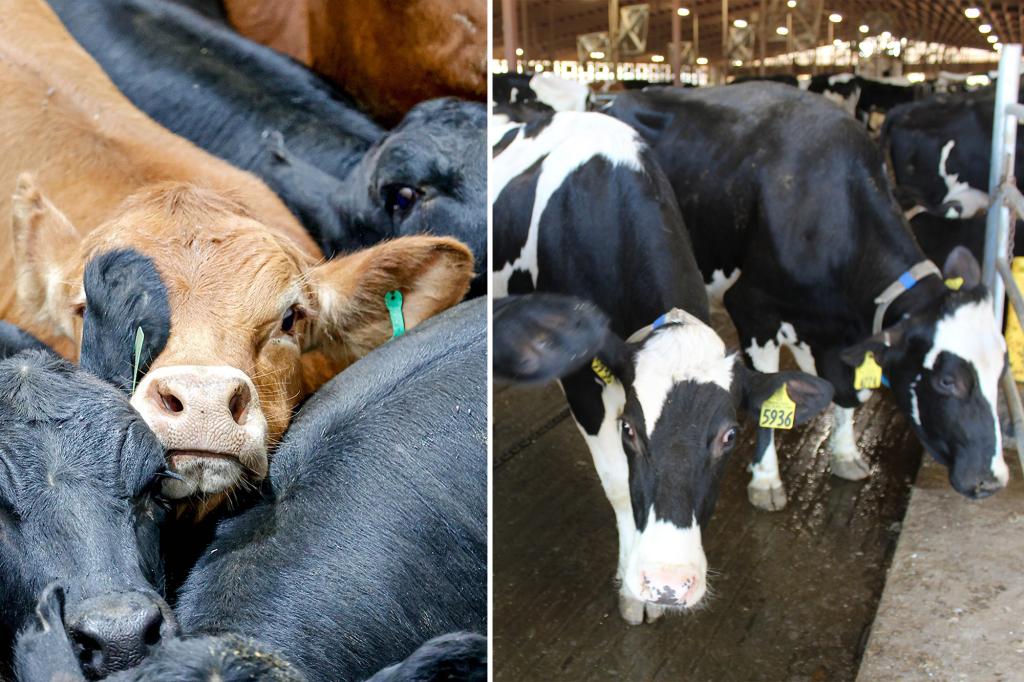The Oklahoma National Stockyards, a century-old landmark and one of the world’s largest cattle stockyards, stands as a vestige of Oklahoma City’s western heritage amidst the city’s burgeoning downtown. Its 100-acre expanse, however, is now for sale, raising concerns about the future of this historic institution and the broader implications for the American cattle market. While the owners hope a buyer will continue stockyard operations, the prime location along the Oklahoma River, coupled with the city’s ambitious development plans, including a new NBA arena and a proposed skyscraper, makes redevelopment a tempting prospect. This sale reflects the evolving landscape of the livestock auction industry, which has faced significant challenges in recent years, including drought, rising production costs, and dwindling cattle numbers, reaching their lowest point since the 1950s. Adding to the uncertainty is the impact of trade tariffs, which have added another layer of complexity to an already volatile market.
The Oklahoma National Stockyards, facing a 20% decline in cattle volume over the past two years, is a family-owned business whose younger generation lacks interest in managing the demanding, around-the-clock operations. The intense workload, coupled with the increasing environmental challenges of running a stockyard within a major city, has contributed to the decision to sell. This move mirrors a broader trend witnessed across the nation, where terminal markets, once prevalent in major Midwestern cities like Chicago, Kansas City, and Omaha, have gradually relocated to rural areas closer to feedlots and meatpacking plants. The rise of refrigeration technologies and the increasing value of urban real estate have driven this shift, leaving the Oklahoma City stockyard as a rare urban survivor. Its potential closure would signify a significant loss for the city’s cultural heritage and the livestock industry, potentially shifting business to smaller markets like Joplin, Missouri, and El Reno, Oklahoma.
The sale of the stockyards carries significant emotional weight for the founding family, who recognize the historical significance of the institution but must prioritize the best interests of the shareholders. The current owners, while acknowledging the sentimental value, have placed the property on the market without a set timeline for the sale. This leaves the future of the stockyard hanging in the balance, subject to the vision of a potential buyer. The stockyards, built on original century-old brickwork, offer a unique glimpse into the workings of a traditional cattle auction. From the metal catwalk overlooking the pens, the thunderous hooves and shouts of cowboys resonate as they guide cattle into the arena, where buyers engage in rapid-fire bidding with the auctioneer. This vibrant scene represents a living piece of Americana, attracting tourists and offering a firsthand experience of the nation’s western heritage.
For generations, the stockyards have served as a vital hub for ranchers like Garrison Duke, who brings his family to witness the age-old tradition of cattle auctioning. His childhood memories of accompanying his father to the stockyards, coupled with the hope of passing on this legacy to his own children, underscores the deep-rooted connection between the community and the stockyards. The surrounding business district, with its western-themed shops and steakhouses, further amplifies the cultural significance of this area. It serves as a testament to the enduring appeal of western culture and the vital role the stockyards play in the local economy.
Oklahoma City’s recent population growth, making it the nation’s 20th largest city, puts additional pressure on land use. Despite this growth, Mayor David Holt remains optimistic about the stockyard’s potential to coexist within the rapidly developing urban center. He believes the city’s expansive geography allows for such integration, unlike denser urban environments like Manhattan. However, this optimism is tempered by the anxieties of those whose livelihoods depend on the stockyard’s continued operation. Commission firms, like the one owned by Jason Baker, express genuine concern about the potential disruption a new owner might bring, recognizing the vital role the stockyards play in supporting their families and businesses.
The uncertainty surrounding the future of the Oklahoma National Stockyards reflects a larger narrative about the changing dynamics of the American agricultural landscape. The intersection of urban development, economic pressures, and evolving industry practices creates a complex scenario where preserving historical heritage must be balanced against the realities of a changing market. The stockyards exemplify a pivotal moment in this ongoing evolution, where the fate of a century-old institution hangs in the balance, awaiting a decision that will shape not only the future of the livestock industry but also the cultural identity of Oklahoma City. The sale represents a potential turning point, highlighting the challenges of preserving historical traditions in the face of modernization and urban growth. The outcome will determine whether the Oklahoma National Stockyards remains a living testament to the city’s western heritage or becomes another chapter in the history of a bygone era.

